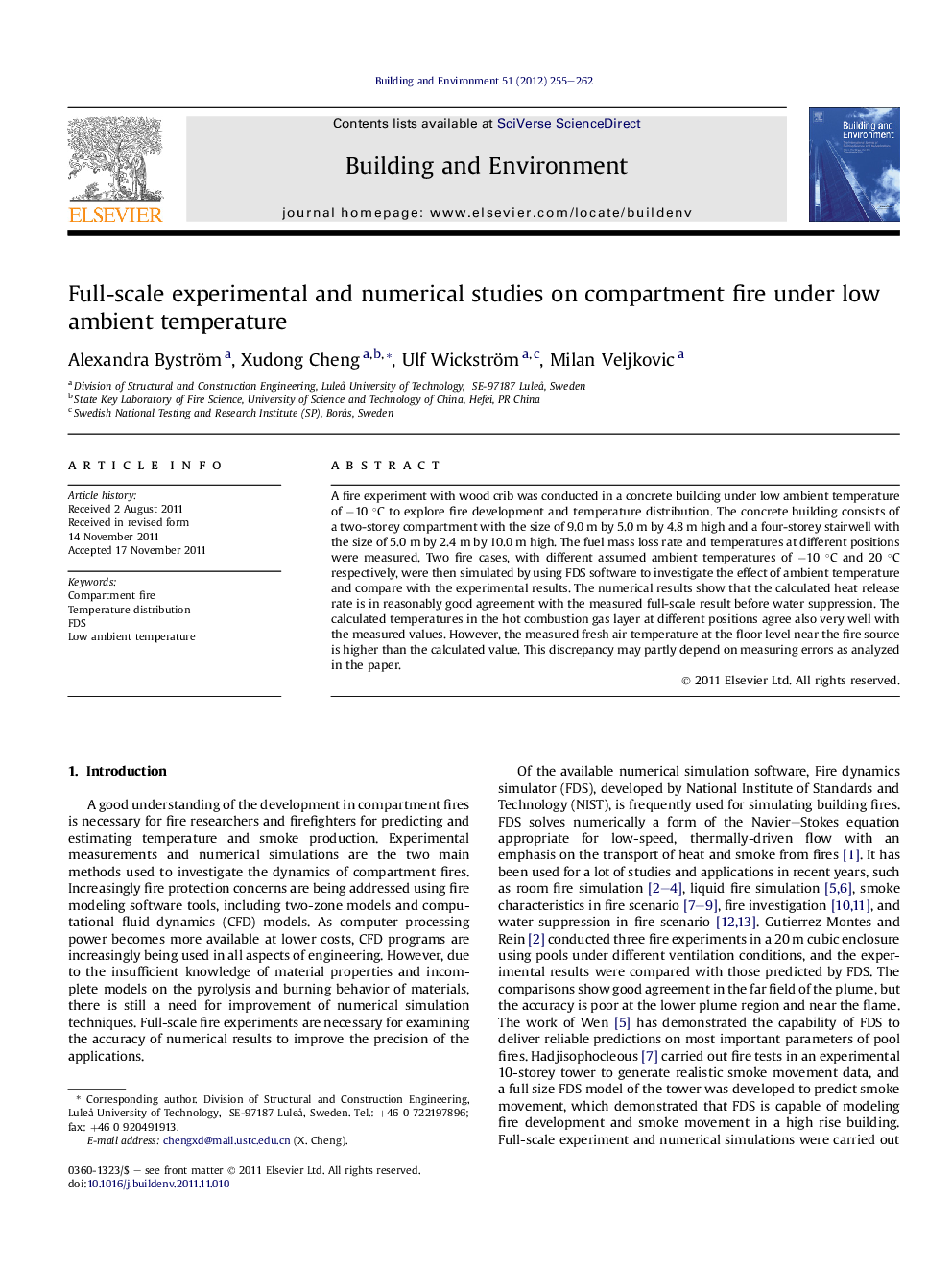| Article ID | Journal | Published Year | Pages | File Type |
|---|---|---|---|---|
| 248479 | Building and Environment | 2012 | 8 Pages |
A fire experiment with wood crib was conducted in a concrete building under low ambient temperature of −10 °C to explore fire development and temperature distribution. The concrete building consists of a two-storey compartment with the size of 9.0 m by 5.0 m by 4.8 m high and a four-storey stairwell with the size of 5.0 m by 2.4 m by 10.0 m high. The fuel mass loss rate and temperatures at different positions were measured. Two fire cases, with different assumed ambient temperatures of −10 °C and 20 °C respectively, were then simulated by using FDS software to investigate the effect of ambient temperature and compare with the experimental results. The numerical results show that the calculated heat release rate is in reasonably good agreement with the measured full-scale result before water suppression. The calculated temperatures in the hot combustion gas layer at different positions agree also very well with the measured values. However, the measured fresh air temperature at the floor level near the fire source is higher than the calculated value. This discrepancy may partly depend on measuring errors as analyzed in the paper.
► We conduct a full-scale fire test in a complex compartment under low ambient temperature. ► We model the fire scenario by using FDS with two different assumed ambient temperatures. ► The burning rate of wooden boards will be accelerated by higher ambient temperature. ► The calculated temperatures in the hot smoke layer at different positions agree very well with the measured values.
